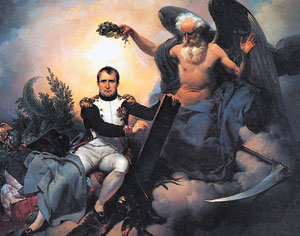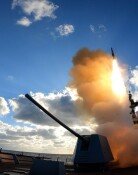Heroes: Who Made Them and Why?

Bonaparte Napoleon became a subject of mockery upon being exiled to the small island of Elba. Caricatures depicting Napoleon as a badminton ball or a large drum the Prussian soldiers played with were scattered. However, his resurrection began when he died in Saint Helena in 1821.
Duke Louis Philip of France became King of the Nation in the national assembly after the French Civil War in 1830. In 1833, he put a statue of Napoleon at the Bandon victory monument. Similar to the way Napoleon rejected both the civil war and the Bourbon regime, Duke Philip planned to utilize the image of Napoleon to confront the leftist Commonwealth clique and the rightists that desired the restoration of the French dynasty.
Idolization of Napoleon reached its peak in 1840 when his remains were returned to France. The remains were buried on the sacred burial grounds at Invalides, where patriotic soldiers rested. Furthermore, Duke Philip could then capitalize on this chance of a watershed for harboring strong national unity.
The book, Making Heroes, is an analysis regarding five prominent figures in four European countries that changed the flow of power using their congenital charisma and their journeys upward to consummate positions. This book was written by six historians, including Professor Park Ji-hyang of the western history department at Seoul National University. The heroes include Bonaparte Napoleon, Joan of Arc (France), Elizabeth I (England), Otto von Bismarck (Germany), and Mussolini (Italia).
All six share one common denominator: they contributed to shaping their nations national identities between the 19th century and the early 20th century when each nation was looking to settle based on the principles of nationalism. Co-author Kang Ok-cho, a former history professor at In-ha University, pointed out that heroes are a medium. He passed away last year, leaving the book as posthumous work.
Heroes before the modern times had a superhuman capability; in other words, they had nothing to do with their nationalities or ethnicities. However, heroes became the source of imagination uniting all strangers after the formation of a modern nation based on nationalism was completed. These heroes existed as hidden gods of national identities and controlled the mentality of their nations.
What the book focuses on is how those figures were reborn as heroes. The book retracts from the social context of needing heroes and explains hero making circumstances through analyses of several other cultural texts such as painting, novels, and movies. This could be the highlight of this book (for example, the books observation of Napoleons resurrection).
The nephew of Napoleon, Louis Napoleon, was elected as president with the aid of his uncles halo effect. When he began an autocracy as an emperor, a slanderous rumor was spread accusing Bonaparte Napoleon as a mercenary leader who was obsessed with his own success. The time in which Napoleon was reborn as a hero began in 1890 when his descendant Grand Duke Gerome died while struggling to take back the throne. The French started to long for Napoleon after the terror of the imperial regime had completely vanished. They considered him as an enthusiastic savior of the nation with nationalistic vigor rather than an emperor.
Then, how was Napoleon reborn as a hero? Through his novel in 1895, Edmond Lepeletier disclosed the French peoples anger toward the German queen who turned her back to Napoleon through his novel, The Betrayal of Mary Louis. In 1900, a play titled the Little Eagle depicting the life of Napoleons son, who drearily died in Austria, the enemy nation of France, hit an emotional chord with both leftists and the rightists. Such works incited the retaliatory spirits of the French left after the defeat in the war between Prussian and French. Since then, Hero Napoleon was quoted whenever nationalistic impulses were needed by the French. This principle applies exactly the same to the other heroes as well: Joan of Arc, Elizabeth I, Bismarck, and Mussolini.
Professor Park says, The past is not a neutral region, but an intense battleground. And, this is accurately portrayed during the procedure of making a hero and winning a battle. What about the circumstances we presently have? We are witnessing a similar phenomenon found in the book; the reminiscent memories to President Park Chung-hee began to arise when the apprehension of military autocracy disappeared. Recent documents of disclosure of his administration may be a good exemplary scene of this battleground.
Ki-Tae Kwon kkt@donga.com







